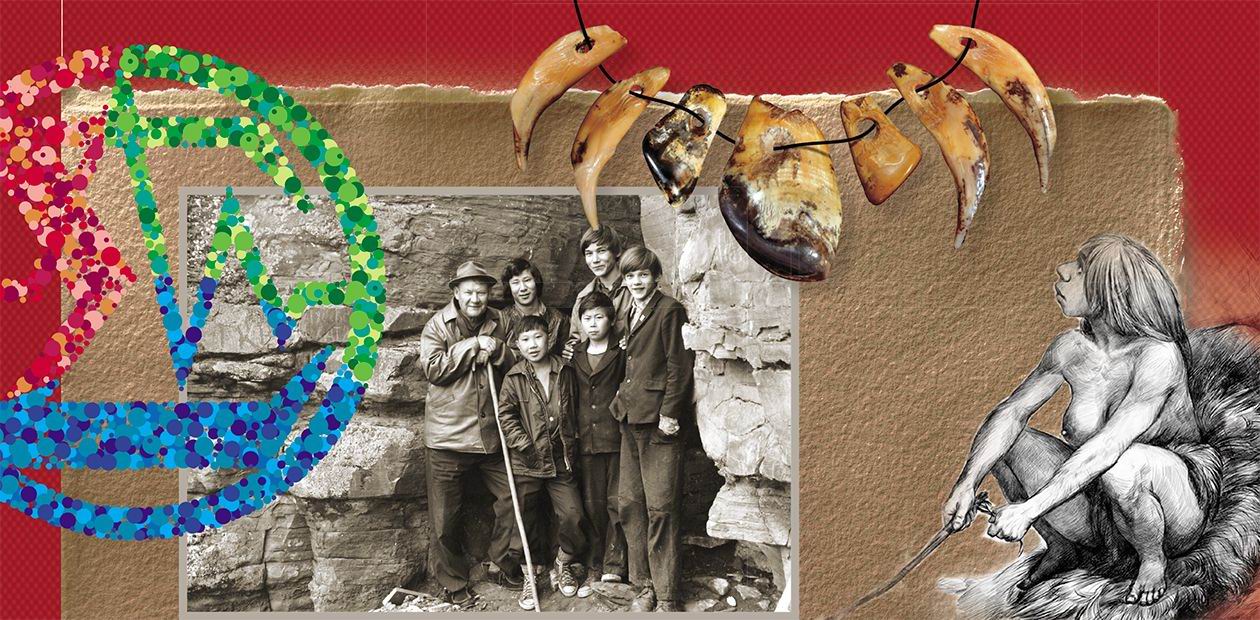The Pleasure of Discovery, or a Hunt for Hominins
When Alexey Pavlovich Okladnikov was asked what he valued most in life, he replied it was the pleasure of a new discovery. Recently I was asked a similar question, and I understood that no archaeologist can formulate the gist of our profession better. Certainly, big ideas do not spring out of nowhere, researchers come to them step by step. Any discovery requires numerous validations, which is the usual practice. When we go on expeditions, we do not seek for something absolutely unknown; normally, expeditions are preceded by thorough preparations, especially if the region is new for digging. We study geology, geomorphology, and natural conditions that existed there twenty thousand, two hundred thousand, or a million years ago… Today, discoveries rarely come as a surprise. What you don’t expect is the quality of the discovery and a chain of related discoveries stemming from it.
Academician Anatoliy P. Derevyanko
In the late 1930, an outstanding archaeologist, historian, and explorer Alexey Okladnikov made one of his sensational discoveries when he found the remains of a Neanderthal child in Teshik-Tash Cave (Uzbekistan). In spring 2017, a group of scientists from the Max Planck Institute for Evolutionary Anthropology, headed by Prof. Svante Pääbo, announced that they developed a method to retrieve hominin DNA from sediment samples collected in once-inhabited caves. What do these two events, separated by decades and thousands of miles, have in common?
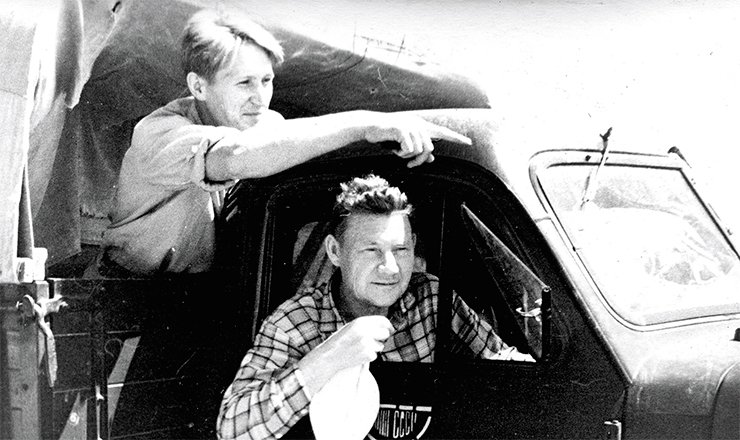
The history of science knows no more alluring and controversial question, a question that would attract universal attention, than the origin of life and the evolution of man. The non-Biblical version of human origin is rooted in the hazy 1600s, when the works of the Italian philosopher Lucilio Vanini and the English lord, barrister and theologian Mathew Hale, with the speaking titles On the Primitive Origin of Man (1615) and The Primitive Origin of Mankind, Considered and Examined According to the Light of Nature (1671), were published. In summary, by the late 19th century, the idea of man as a product of a long evolution of more primitive anthropoid beings had germinated and ripened. Just one small thing was lacking – to discover this pithecantropos (from Greek pithekos “ape” and anthropos “man”) “in flesh,” which was done in the early 1890s by the Dutch anthropologist Eugene Dubois, who found the remains of a primitive hominin on the island of Java.
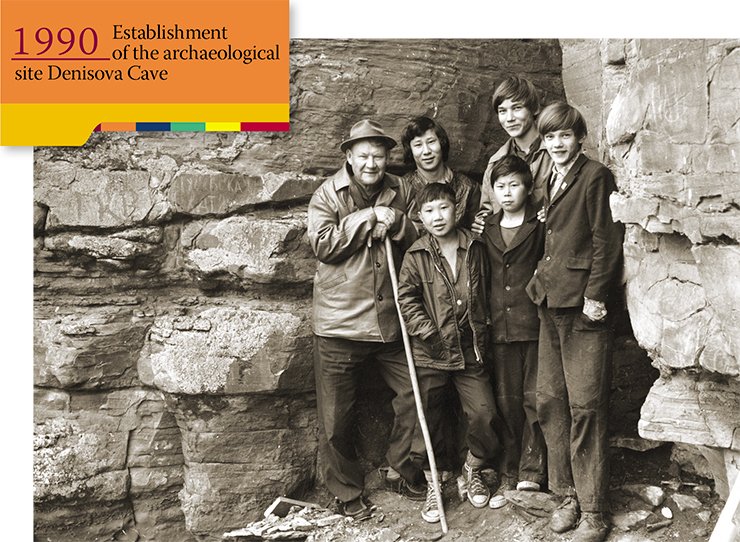
Since that time, another issue, as topical and controversial as man’s descent from apelike ancestors, was placed on the agenda: geographical centers and development of anthropogenesis. Thanks to the amazing discoveries made in the recent decades by the cooperative efforts of archaeologists, anthropologists, and specialists in paleogenetics.
Until recently, it was only possible to determine DNA sequences and whole genome sequences from present-day individuals from which DNA can be isolated in good condition from fresh tissues such as blood. To evolutionary scientists this is somewhat frustrating because it represents an indirect way to study the past: one studies DNA sequences that exist today, uses the best models we have for how mutations accumulate and estimates what common ancestors may have looked like. This is frustrating because what we have are estimates subject to many uncertainties for example as a result of the mutational models used. However, by the end of the last century the breakneck development of molecular biology had given us methods for retrieving DNA sequences from archaeological and paleontological remains first of Late Pleistocene animals and then humans (Pääbo, 2014).
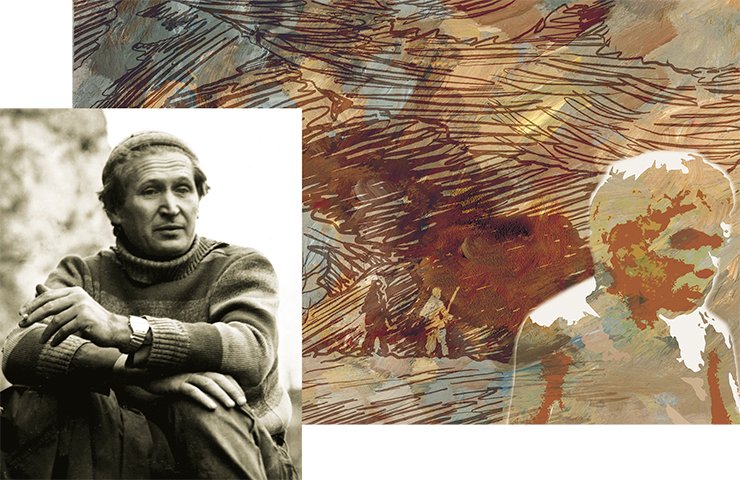
…All around us is the opulence the south. Even here, in this somber gorge, this land strikes with its lavishness. Opulence blooms everywhere: in colors, in aromas, in contrasts. Grapes ripen at the foot of the mountains; the never-melting snow blinds us with its dazzling glare from mountain tops.
The cave is dusky though it isn’t deep. It descends 20 meters inside the mountain, and its ceiling is 7 to 8 meters high. It seems that enough light should be reaching its interiors. But the mountains… They obstruct the sun. Its rays seldom touch the cave floor. At first glance, it seems strange: Why would the primitive man avoid the sun? But in a moment, the sun rises in the east and ascends higher and higher up the sky. Finally, sunrays reach inside the cave, bringing life into it. Yes, the whole place revives from a huge mass of wasps and bees. Oh! The primitive man had thought about that when choosing a place to live.
<…> The cranium was lying with the crown down. It must have been crushed by a falling clot of earth. The skull was small! A boy’s or a girl’s.
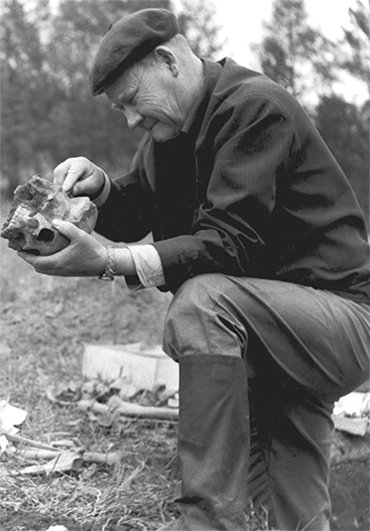 With a spade and a brush, Okladnikov began widening the dig. The spade hit against something hard. A bone. Another one, and one more…It was a small skeleton, the skeleton of a child. An animal must have found its way into the cave and picked the bones. They were scattered, some of them gnawed and bitten.
With a spade and a brush, Okladnikov began widening the dig. The spade hit against something hard. A bone. Another one, and one more…It was a small skeleton, the skeleton of a child. An animal must have found its way into the cave and picked the bones. They were scattered, some of them gnawed and bitten.
But when did this child live? In what years, centuries, millennia? If he was a young master of the cave when people who worked stone lived here … The thought was terrifying. If it was so, the child was Neanderthal. A man who lived tens of thousands or even a hundred thousand years ago. He must have a very pronounced brow ridge and no chin.
The easiest thing to do was to turn the cranium to have a better look but this would have disrupted the excavation plan. They had to complete the excavations around it leaving the child’s bones untouched. The dig around them will deepen, and the bones will remain as though lying on a pedestal.
The archaeologist couldn’t sleep that night. He thought about what may come out of that find and sneaked amazed glances at the workers who didn’t sleep either. They sat around a fire, arguing… In the morning, Ikram said:
“They are leaving. Don’t want to work here. They say: Muslims must not dig out the dead.”
What will he do without the workers? If they go back to the kishlak [village], no one will ever come here.
<…> The kolkhozniks sat down in a circle, their deep, angry eyes piercing at Okladnikov.
He thought: What should he begin with? Should he tell them about the years of searching, about his struggle and determination, stunning to everyone in a man of his age? Tell them about his faith, fanatical faith, which, however, required proof? How he searched for this proof in taiga along the Lena River, near the desolate shores of the Angara, be it rain or heat? How they camped in tents, from the breaking of ice in spring to snowflakes in autumn, sleeping on frozen earth, about ice-cold rivers out of which you come stiff frozen, about clouds of mosquitoes, whose bites made your face burn, and you could barely speak, your eyes and lips swollen, but you couldn’t hide from them. Against all odds – they marched further into the taiga, in search for answers, because they believed in the truth of history. In the truth without which people cannot live in this world yet which remains hidden in the millennia.
He looked at the workers around him. Grim faces, mistrustful eyes… They don’t speak Russian. No, he must be brief. He must talk only about things that are familiar to them, things they’ll understand.
Okladnikov shook his head, as he usually did when he took up on a hard business, and his stubborn curly hair pressed against his forehead.
“Long, very long ago lived a man. He was called a Neanderthal. We all come from this man. All people, no matter if their skin is white, or red, or black – all of us are equal, like brothers.”
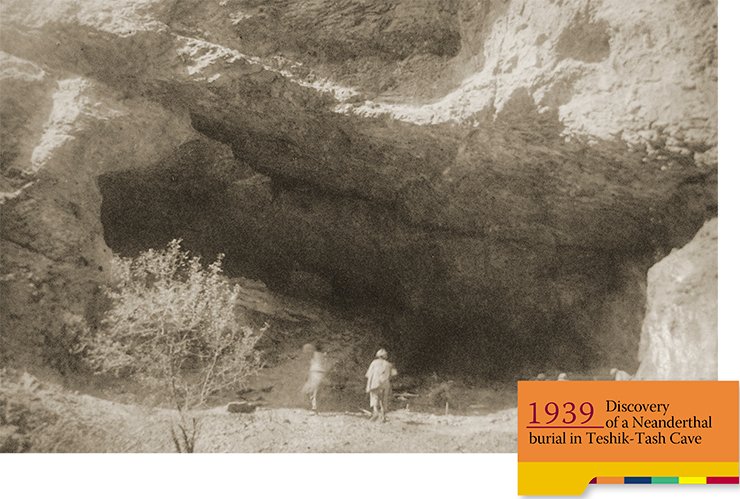
Okladnikov spoke slowly, so that Ikram could translate him. He saw the eyes of the Uzbeks grow warmer; they whispered to one another, shaking their heads approvingly. They were his friends, and he regretted he hadn’t told them from the very beginning about himself, about Siberian peoples, about the amazing life of archaic humans, whose traces he had found in taiga. Those men became even closer to him: their fate had so much in common with that of Northern peoples.
“Now ask them: Do they agree to continue the excavations?”
<…> The kolkhozniks didn’t sleep all night. They sat around the fire, drank green tea, sipping loudly, and argued.
In the morning, one of them, a tall, long-bearded man, packed his sack and walked down the hill, not looking back. The workers stared sullenly after him. Ikram dropped a word at him; everyone broke in laughter.
“I told them,” he explained to Vera Dmitrievna, “that wasting words on a fool is like nailing a stone. They liked my words very much. They’ve changed completely after your husband’s lecture.”
Then he drawled pensively, looking at Okladnikov.
“In the hands of a true blacksmith, iron flows like water.”
The child’s bones were left untouched. They were even covered. The archaeologists dug around them, and the bones were on a ground pedestal, which became higher every day. It appeared to be growing from the underground.
The night before that memorable day Okladnikov had trouble falling asleep. He was lying on his back, hands behind his head, looking up at the black southern sky. Far above, the stars were swarming. They were so many that it seemed there was not enough room for all of them. That faraway world inspired awe and at the same time instilled serenity. You felt like thinking of life, eternity, the faraway past and the faraway future.
What could the ancient man be thinking about when he was looking up at the sky? It was the same as it is now. Maybe, sometimes he also had trouble falling asleep, was lying in the cave and looking up at the sky. Did he only have memories or did he have dreams as well? What was that man? The stones told a story but there were many things about which they remained quiet.
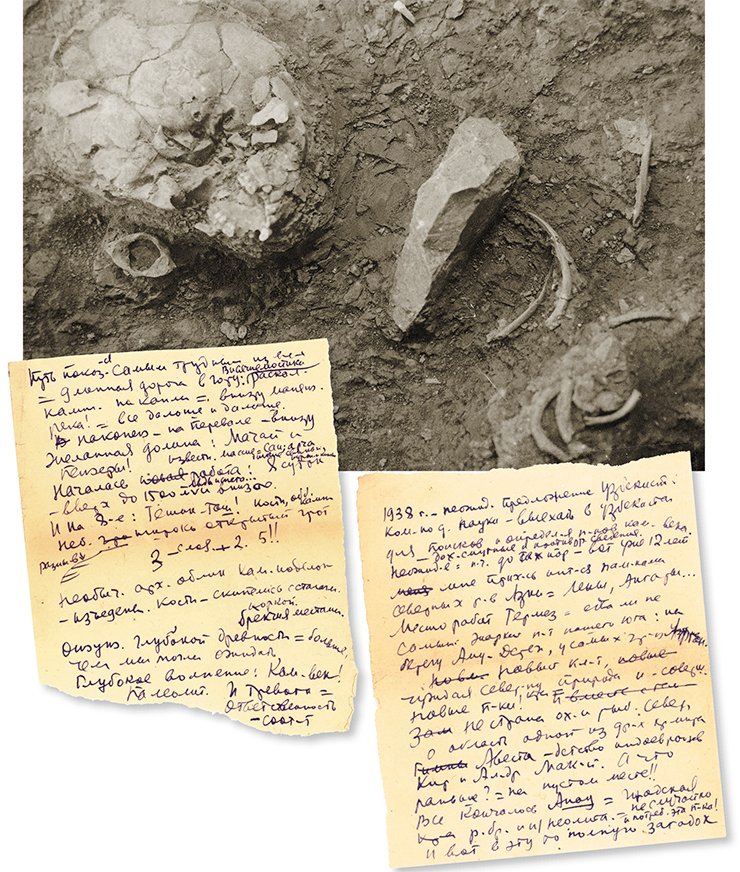
Life buries its traces deep underground. Overlaying them are new traces, which with time also go down. And so it happens century after century, millennium after millennium. Life puts layers of its past in the ground. Paging through them, an archaeologist can learn about the doings of the people who used to live here and to determine, virtually without mistake, the times when they lived.
Drawing the curtain above the past, they removed land layer by layer, as time had put them.”
Before starting the excavations, Okladnikov, as usual, dug out a test pit.
The pit revealed five cultural layers, i. e., five layers of earth retaining traces of man who lived there. The layers alternated with sterile ones, which deposited during the periods when man did not inhabit the cave.
Man came to this cave five times and left it five times. What made them leave? Giant catastrophes? The sterile layers contain silt and sand. There are boulders in the cave. Is this evidence of floods? Or, perhaps, man left the cave in search for better hunting grounds? Or a formidable enemy attacked people and forced them out of the cave? And then, again and again, man returned to these amazingly scenic places.
by Ye. I. Derevyanko and A. B. Zakstelsky
The first representative of archaic people that became known to science is the Neanderthal, Homo neanderthalensis. The Neanderthals mostly lived in Europe but traces of their presence have also been discovered in Near East, West and Central Asia and in the south of Siberia. These short stumpy people, physically strong and well adapted to the severe conditions of the northern latitudes, in terms of the brain volume were on a par with modern humans. In a century and a half that has passed since the first Neanderthals’ remains were discovered, hundreds of their sites, settlements and burial grounds have been studied. It has turned out that these archaic people not only made quite advanced tools. According to Okladnikov, the excavations in Teshik-Tash Cave (Uzbekistan) “revealed an unpredicted, truly amazing picture, a picture no researcher had ever seen: the skull of a Mousterian man was circled, once in a strict order, clearly in accordance with a premeditated plan, with ibex horns. That arrangement provided compelling evidence of a rational mind, a logical plan of action, an entire world of ideas that stood behind that action.”
No wonder that prior to the beginning of the 21st century, many anthropologists classified the Neanderthals as an ancestral form of modern humans; however, after mitochondrial DNA from their remains was examined, they were treated as a dead end. In 2007, Pääbo’s laboratory investigated the mtDNA from the left femur of the Teshik-Tash Neanderthal child and from the bones found in Okladnikov Cave. Their comparison with earlier decoded genomes showed similarity between the Siberian and European Neanderthals.
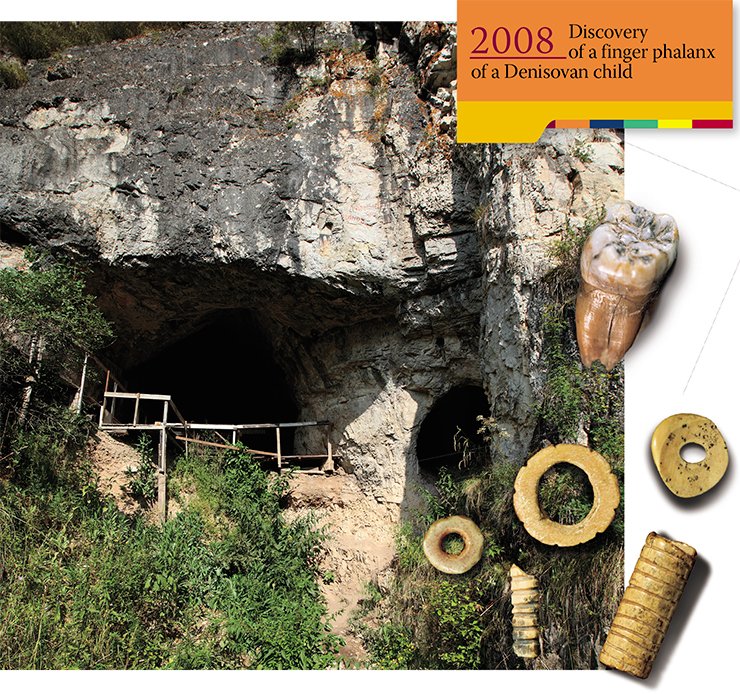
by A. P. Derevyanko (1980)
The Neanderthals were considered to have been forced out and replaced by modern humans of African descent. Further studies have shown, however, that the relations between the Neanderthals and Homo sapiens were not as simple as that. Currently, there is no doubt that on the border of the areas populated by these humans not only cultural diffusion but also hybridization and assimilation took place. Today, the Neanderthals are classified as a sister group of modern humans, and their status of “man’s ancestors” has been restored.
In the rest of Eurasia, the development of the Upper Paleolithic followed a different path. Let us trace this development through the example of the Altai region, which has produced some astonishing results obtained with the help of the paleogenetic examination of the anthropological findings from Denisova and Okladnikov caves. Paleogenetic studies confirmed that the remains discovered in Okladnikov Cave were Neanderthal whereas the results of the sequencing of mitochondrial and then nuclear DNA from the bone samples discovered in the occupation layer of the Upper Paleolithic early stage in Denisova Cave sprang a surprise on the researchers.
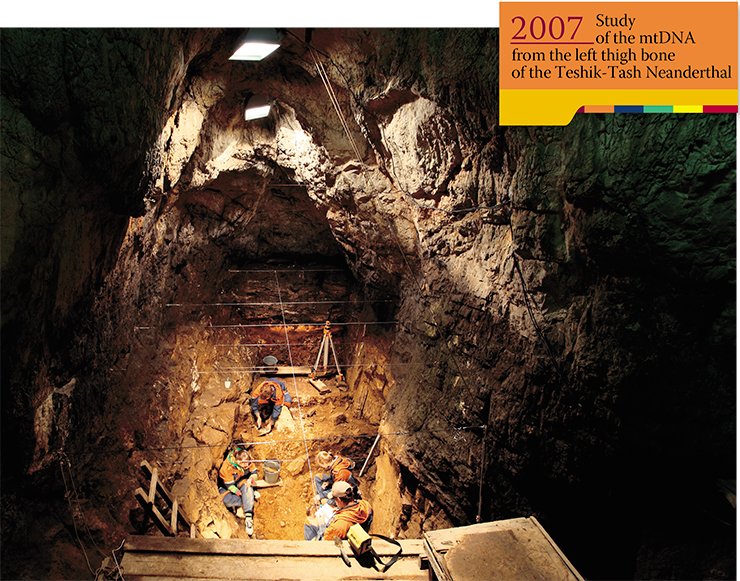
Okladnikov was succeeded at the director’s post in 1983 by his student, a renowned expert in ancient history Anatoliy Derevyanko, who initiated a reorganization of humanities at Novosibirsk Science Center. Interdisciplinary studies of Asian antiquities in close cooperation with leading science centers of Russia, Europe, Asia, America, and Australia brought fundamental results, rated among the most outstanding achievements of modern archaeology.
The bone fragments proved to belong to a new fossil hominin, unknown to science, who was given the name of Homo sapiens altaiensis, or Denisovan, after the locality where he was discovered.
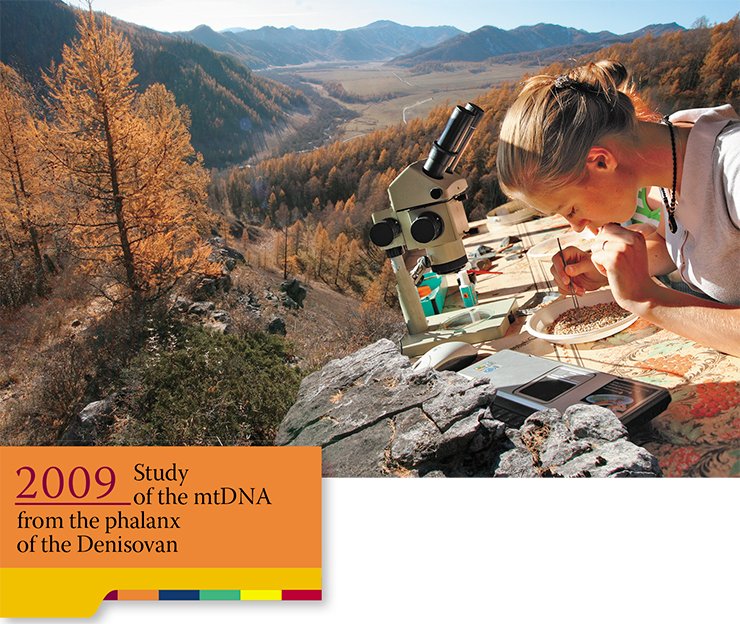 The genome of the Denisovans differs from the reference genome of a modern African by 11.7 %, and that of the Neanderthal from Vindija Cave, Croatia, by 12.2 %. This similarity testifies that the Neanderthals and Denisovans are sister groups with the same ancestor, who branched off the man’s mainstream evolutionary trunk. These two groups separated approximately 640,000 years ago, taking the path of independent development.
The genome of the Denisovans differs from the reference genome of a modern African by 11.7 %, and that of the Neanderthal from Vindija Cave, Croatia, by 12.2 %. This similarity testifies that the Neanderthals and Denisovans are sister groups with the same ancestor, who branched off the man’s mainstream evolutionary trunk. These two groups separated approximately 640,000 years ago, taking the path of independent development.
Judging by the archaeological data, 50,000—40,000 years ago, in the northwestern region of Altai two different groups of primitive people lived next to each other: the Denisovans and the easternmost population of the Neanderthals, who came there at about the same time, probably from the territory of modern Uzbekistan. The roots of the culture whose carriers were the Denisovans can be traced back to the earliest sequences of Denisova Cave, as it was mentioned earlier. Interestingly, according to the panoply of archaeological findings reflecting the development of the Upper Paleolithic culture, the Denisovans were not only on a par with the anatomically modern humans inhabiting at that time other territories but in some respects were superior to them.
The neighborhoods of Russia’s largest archaeological stationary site Denisova Cave in the Altai Mountains house the most ancient settlement of primitive man in North and Central Asia—the Karama site, a remnant of the first migration wave from the African “cradle.” Denisova Cave itself achieved worldwide fame after the recent discovery of a new, previously unknown representative of archaic mankindThe discovery of the Denisovan, a new member of the hominin family, is of critical importance for modern science. For a long time, Siberian archaeologists believed that the population that inhabited South Siberia and created the earliest blade industry in Europe had been humans of a modern physical type. However, when the evidence for an unknown subspecies became compelling, scientists realized that the development of modern man followed a much more labyrinthine path than they previously thought. The hypothesis of a linear evolution of mankind, which prevailed in science until the late 1980s, clashed against the new data obtained by sequencing first the mitochondrial and then nuclear DNA and, finally, collapsed.
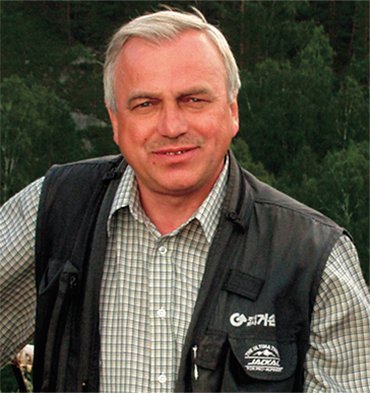 Based on the currently available archaeological, anthropological, and genetic materials from the most ancient sites in Africa and Eurasia, scientists now trace the origins of humans of a modern anatomical and genetic type, Homo sapiens, to at least four types of hominins: Homo sapiens africaniensis (East and South Africa), Homo sapiens neanderthalensis (Europe), Homo sapiens orientalensis (Southeast and East Asia) and Homo sapiens altaiensis (North and Central Asia). Evidently, not all of these subspecies have contributed equally to the formation of anatomically modern humans: Homo sapiens africaniensis featured the greatest genetic diversity, and it was he who laid the foundation for the modern human. However, the most recent data of paleogenetc research dealing with the presence of Neanderthal and Denisovan genes in the gene pool of modern mankind have shown that the other groups of ancient people did not stand back either.
Based on the currently available archaeological, anthropological, and genetic materials from the most ancient sites in Africa and Eurasia, scientists now trace the origins of humans of a modern anatomical and genetic type, Homo sapiens, to at least four types of hominins: Homo sapiens africaniensis (East and South Africa), Homo sapiens neanderthalensis (Europe), Homo sapiens orientalensis (Southeast and East Asia) and Homo sapiens altaiensis (North and Central Asia). Evidently, not all of these subspecies have contributed equally to the formation of anatomically modern humans: Homo sapiens africaniensis featured the greatest genetic diversity, and it was he who laid the foundation for the modern human. However, the most recent data of paleogenetc research dealing with the presence of Neanderthal and Denisovan genes in the gene pool of modern mankind have shown that the other groups of ancient people did not stand back either.
Huge prospects for further development of the theory of anthropogenesis come from a new paleogenetic method for retrieving traces of ancient people from sediments, which was developed by the international team led by Prof. Pääbo. As of today, researchers have found both Neanderthal and Denisovan DNA in soil samples from Denisova Cave; importantly, they have discovered it in the layers containing no fossil remains. This evidence suggests that archaic people had lived here tens of thousands of years earlier than we previously thought.
Skeletal fragments of archaic people are very rare archaeological finds, so the new way of working with fossil DNA will tell us much more about the time when they lived and about their place of living and migrations. Perhaps, we will even hunt down where exactly the Denisovans lived: an analysis of the genome of modern people indicates that they lived somewhere in Asia, but we yet have no clue as to where and when, and their remains have so far been found only in one place – in Denisova Cave.
IN SEARCH OF THE LOST GENOMESThe human genome is contained in chromosomes that are present in almost every cell in our bodies. It is composed of approximately 3,2 billion nucleotides. When cells replicate for form germ cell that will contribute to the next generation mutations occur. As a result of these mutations 50 to 200 new substitutions exist in every new individual that is born. These substitutions accumulate in the genome over time to the extent that roughly one nucleotide in a thousand differs between two human genomes today, whereas roughly one nucleotide in a hundred differ between a human and a chimpanzee genome. In addition, duplicated DNA sequences differ both between individuals and between species.
Each particular nucleotide site in the genome has its own history that could in principle be traced back through past generations. Such a history can be depicted in the form of a tree showing common ancestors shared with the same site seen in other individuals today. However, in reality, it is impossible to trace the history of a single nucleotide site. Therefore, one generally traces the average history of a segment of the genome, or the entire genome, and depicts that in the form of a tree that thus represents an average picture of how most sites in the DNA segments or genomes whose nucleotide sequences have been determined are related.
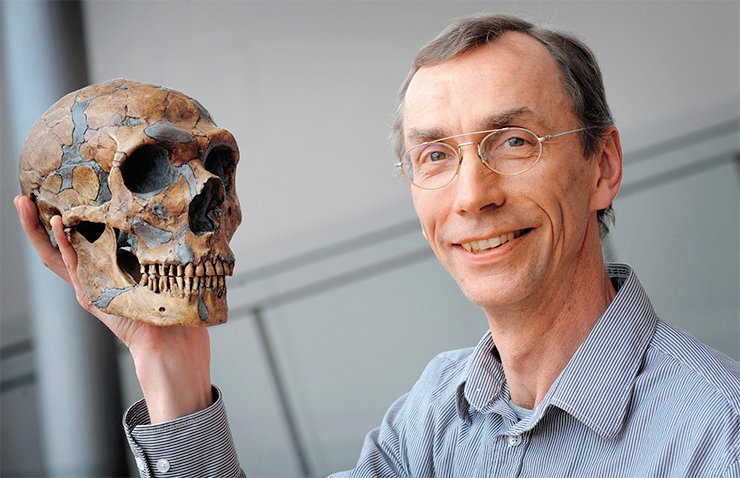
Until recently, it was only possible to determine DNA sequences and whole genome sequences from present-day individuals from which DNA can be isolated in good condition from fresh tissues such as blood. To evolutionary scientists this is somewhat frustrating because it represents an indirect way to study the past: one studies DNA sequences that exist today, uses the best models we have for how mutations accumulate and estimates what common ancestors in the past may have looked like. This is frustrating because what we have are estimates subjects to many uncertainties for example as a result of the mutational models used. Since over 30 years, our laboratory works on methods to overcome this “time trap” by going back in time and retrieving DNA sequences from archaeological and paleontological remains. This is possible only on rare occasions when well-preserved tissues can be found. Direct ancestors of present-day organisms are also almost never available. However, this approach nevertheless opens up new possibilities in that it allows DNA sequences from past populations and extinct species to be determined.
Of particular interest to us is the closest extinct relative of all present-day humans: the Neandertals. This robust form of hominins emerged in Europe and western Asia approximately 300,000 to 400,000 years ago and disappeared between 30,000 and 40,000 ago. The debate concerning the relationships between Neandertals and modern humans and about what happened when they met lasted for decades. One idea was that modern humans replaced Neandertals without interbreeding, in which case the Neandertal contribution to present-day human genetic variation would be zero. Another idea was that Neandertal were the direct ancestors of Europeans. In this case, the Neandertal genetic contribution to present-day people in Europe would approach 100 %. Obviously, all levels of contribution between 0 % and 100 % are also possible, and different levels of Neandertal contribution to present-day Europeans have been argued for on the basis of archaeological and paleontological data.
We got a first chance to directly test these hypotheses in the mid‑90s when we were allowed to analyze the Neandertal bones that were discovered in the Neandertal Valley in Germany in 1856 and gave its name to this hominin group. At the time, we were able to draw on over ten years of experience with the development of techniques to extract and amplify small amounts of DNA from ancient remains of cave bears, mammoths and other late Pleistocene mammals (Pääbo, 2014). We focused on the mitochondrial DNA (mtDNA), because every cell contains hundreds or even thousands of mtDNA copies, making it easier to retrieve mtDNA than any particular part of the nuclear genome. We reconstructed the most variable part of the mtDNA and estimated phylogenetic trees to reconstruct the history of the mtDNAs of Neandertals and present-day people. In contrast to the nuclear genome, the mtDNA is inherited as one single unit from mothers to offspring without recombination so a phylogenetic tree for mtDNA reflects not the average history but the exact maternal lineages that relate the mtDNA analyzed. On the one hand these trees showed what was already known, that the mtDNAs of all people inhabiting the Earth today trace their ancestry back to a common ancestor about 100,000—200,000 years ago. But they also showed that the mtDNA lineage of the Neandertal type specimen went much further back in time and shared a common ancestor with present-day mtDNAs in the order of half a million years ago (Krings et al., 1997). Subsequently, we and others have determined several other Neandertal mtDNA sequences. They all fall together outside the variation of the mtDNAs of present-day people. Thus, in 1997, it was clear that for the mtDNA, the complete replacement model held: no person today carries an mtDNA derived from a Neandertal.
However, the mtDNA represents only a tiny part of our total genome. The full picture of our genetic history can only be obtained by studying the nuclear genome. In the early years of this millennium it became feasible to consider sequencing genomes from ancient organisms thanks to new techniques that made it possible to sequence millions of DNA molecules rapidly and inexpensively. We were lucky to receive funding from the Max Planck Society for a five-year effort to improve the technique of the extraction of DNA from ancient bones and making DNA libraries that could be used for high-throughput DNA sequencing. We also analyzed a large number of bones from many sites in Europe to find those bones that contained the largest relative proportion of Neandertal DNA. We settled on a site in Croatia, from which we used tree bones from different Neandertal individual and sequenced more than one billion short DNA fragments extracted from the bones. We developed computer algorithms to match these short DNA sequences to the human genome while accounting for errors induced by chemical process that have affected them over tens of thousands of years. Only a few percent of all sequences derived from the Neandertal individuals. Nevertheless, in 2010 we were able to present about 3 billion nucleotides of Neandertal DNA that had been mapped to the human genome. Together these DNA fragments covered about 55 % of the parts of the Neandertal genome to which short fragments can be mapped (Green et al., 2010). This was enough to ask if any genetic interaction had occurred when modern humans encountered Neandertals.
If Neandertals made no genetic contribution to modern humans, the Neandertal genome would be equally far from Africans, Europeans and any other present-day populations. In contrast, if present-day Europeans carried the DNA that they had inherited from Neandertals, European genomes would carry fewer differences to Neandertals than African genomes, since Neandertals were never in Africa so would not be expected to have contributed to genomes there. To test this, we sequenced the genomes of five present-day people and identified positions where two of these differed from each other. We then asked how often at these positions the Neandertal genome carried the variant seen in one present-day person and how often it carried the variant seen in the other present-day person. This approach of counting matches to pairs of present-day genomes was necessary since the quality of the Neandertal genome was so low that we could not trust sequence variants that were seen only in the Neandertal genome and not also in one of the present-day genomes. When we compared two African genomes in this way, the Neandertal genome matched variants in the two genomes equally often. This is to be expected since there was no reason to expect that Neandertals would have contributed DNA to the ancestors of any of the Africans. Intriguingly, when we compared a European and an African to the Neandertal genome, we detected statistically significantly more matching to the European genome, suggesting that Neandertals had contributed DNA to the ancestor of the Europeans. Even more surprising was that when we compared a person from China to an African, and a person from Papua New Guinea to an African, we always found that the non-African matched the Neandertal genome more often than the African genome. This was surprising to us since Neandertals have probably never been in China and surely never in New Guinea. How could this be?
The explanation that we suggested and that has since been borne out by work in our own and other groups was that Neandertals met modern humans and mixed with them probably in the Middle East. If these modern humans later became the ancestors of everybody that today live outside Africa, these early modern humans can so to speak have carried with them the Neandertal genetic contribution also to geographical areas where Neandertals never existed. As a result, between 1 and 2 % of the genomes of every person whose roots are non-African is of Neandertal origin. That the Neandertal component in the genomes of present-day people has since been dated by studies of the extent to which Neandertal-like DNA segments have been broken down to smaller pieces by recombination that happens in each generation (Sankararaman et al., 2012). It has also been confirmed by subsequent studies of a modern human that is about 40,000 years old who carries much larger segments of Neandertal DNA than present-day people since they lived much closer to the time of mixture (Fu et al., 2014).
Of course, it is unlikely that mixing between Neandertals and modern humans happened only in one population and exclusively in the Middle East, but given the data at hand in 2010 this was the simplest explanation of our findings. Further insights were to a large extent limited by the comparatively low quality of the Neandertal genome. This was to be changed thanks to our collaboration with Anatoly Panteleevich Derevianko.
The excavations at Denisova Cave, led by Academician A. P. Derevianko and Professor M. V. Shunkov of the Institute of Archaeology and Ethnography of the Siberian Branch of the Russian Academy of Sciences have generated many fundamental and novel insights into human evolution. One of their crucial finds is a hominin toe bone discovered in 2010. When we applied new, ultra-sensitive methods that my laboratory have developed to extract DNA and produce DNA libraries to this bone, we were able to sequence almost 50-fold more endogenous DNA from this single small bone than from the three bones from Croatia that had been used to produce the first Neandertal genome a few year earlier. This individual turned out to be a Neandertal and its genome was sequenced to a quality higher than most genomes determined from present-day, living people (Prüfer et al., 2014).
Using such high-quality genomic information, it is possible to observe differences between the two genomes that the individual inherited from her father and from her mother. One can thus gauge the extent of variation in the population where the parents of the individual lived. One can also estimate how closely related the mother and the father of the individual were to each other. In the case of the Neandertal from Denisova Cave this yielded an unexpected result. The paternal and maternal genomes had long segments of DNA that were identical. This means that the parents of this individual were closely related. One can estimate that they must have been related at the level of half siblings. When in the future further Neandertal genomes are sequenced to the same high quality as the one from Denisova Cave, it will be interesting to see if this was an unusual situation among Neandertals or if it reflects the social pattern typical of Neandertals.
The high quality of the Neandertal genome from Denisova Cave can also be used to estimate what parts of the genomes of present-day people were inherited from Neandertals. This confirms that everybody outside Sub-Saharan Africa carries between 1 to 2 % of Neandertal DNA. This proportion is slightly larger in East Asia than in Europe, suggesting that additional admixture between Neandertals and modern humans may have happened during the colonization of Asia (Vernot and Akey, 2015). To get a perspective on this, you may recall that we all have one half of our DNA from each of our parent, about 25 % from each grand-parent, about 12 % from our great grandparents, and so on. From an ancestor six generations back we have on average inherited about 1.5 % of our DNA. Thus, from the point of view, of the total amount of DNA people today have inherited from Neandertals it is as if they had a Neandertal ancestor six generations back. However, due to recombination that occurs when new germ cells are formed in each generation, the Neandertal DNA is distributed in much smaller fragments than the DNA you have inherited from your ancestors six generations back. You may also ask how much of the total Neandertal genome exists distributed among people living today. This estimate is still very approximate but it would seem that at least about 40 % of the Neandertal genome can be found in people today.
Amazingly, the high-quality Neandertal genome is not the only great gift that Denisova Cave has given the world. In 2008 a tiny piece of the phalanx of a fifth finger of a child was discovered in the East gallery of the cave. We were privileged to work on this find and were happy to be able to generate first a low quality genome (Reich et al., 2010) and then, as our techniques improved, a high-quality genome from it. In this genome, each position in the part of the genome amenable to mapping short pieces of DNA was covered over 30 times (Meyer et al., 2012). When we compared this genome to other genomes, we were surprised to find that it was neither a modern human nor a Neandertal. It shared a common ancestor with Neandertals but this ancestral population lived about four times further back in time than the oldest ancestral population shared among present-day human populations. After discussions with Academician A. P. Derevianko and his team in Novosibirsk, it was decided to name this new hominin group “Denisovans.” It is the first hominin group described on the basis of a genome sequence rather than a morphological description. Although remains of Denisovans have yet to be found outside the Denisova Cave, we can learn about their history and the history of other hominins by studies of their genome.
Interestingly, in the order of 5 % of the genomes of people that today live in the Pacific, for example, Aboriginal Australians and Papuans, come from Denisovans (Reich et al., 2011), suggesting the ancestors of these populations met Denisovans and sired offspring with them. In addition, about 0.2 % of the genomes of people in Mainland Asia come from Denisovans (Skoglund and Jakobsson, 2011; Prüfer et al., 2014). By comparing the two high-quality genomes of a Neandertal and a Denisovan that have been determined from Denisova Cave, we can also discern gene flow events that have occurred between these two groups and other gene flow events that have affected these two groups differently. A minimum of two additional instances of gene flow can be detected by these comparisons: one from eastern Neandertals into Denisovans, and one from an unknown hominin that diverged a million or more years ago from the human lineage into Denisovans (Prüfer et al., 2014). In addition, recent work shows that early modern humans in Europe mixed with Neandertals when they first arrived there (Fu et al., in press).
The emerging picture is thus a complicated one, where many different hominin groups exchanged genes with each other on what must have been many occasions. Often this exchange was of limited magnitude but it shows that the gene pools of most or even all hominin groups in the Late Pleistocene were open systems that allowed genetic variants to spread from one group to another. One interesting question then becomes of this may have been of functional importance. As yet, we do not know much about this, but I want to bring up a few examples of what has emerged from studies by several groups in the last two years.
One way to ask what functional role Neandertal genetic variants may play in present-day genomes is to ask what the genes are that carry Neandertal variants that have risen to high frequency. The fact that these variants have become frequent today may suggest that they were positively selected in the past. The group of genes that is statistically overrepresented in such genomic segments are keratins, i. e. structural protein in present in skin and hair (Vernot and Akey, 2014; Sankararaman et al., 2014). Thus, it is likely that in the future we will find that some aspect of the morphology or function of skin and hair that is present in some people in Europe and Asia derive from Neandertals.
There are also aspects of metabolism that are affected by Neandertal variants. For example, Europeans but not Asians carry more Neandertal variants than statistically expected of genes involved in the catabolism (Khrameeva et al., 2014). It is not yet known what these variants do but it will hopefully be discovered in the next few years. Interestingly, a variant of the gene encoding a protein that transports lipids across cell membranes and is derived from Neandertals has risen to a frequency of up to 35 % in East Asia and Native Americans. This variant is associated with increased risk to develop type 2 diabetes (SIGMA Consortium, 2014). It may seem surprising that a Neandertal gene variant that confers the risk of disease has become frequent in the population. One may speculate that a variant that causes diabetes today in people who enjoy ample nutrition throughout life may have represented an advantage in a situation of food shortage. Thus, this gene variant may represent a Neandertal adaptation to starvation that in the past was advantageous also in modern humans.
Have Denisovans like the Neandertals contributed functionally to present-day people? Recent work suggests that this is the case. The population in Tibet carries genetic adaptations to life where the partial pressure of oxygen is low, as is the case at high altitudes on the Tibetan High Plateau. The major gene variant responsible for this adaptation affects the number of red cells in blood and occurs at a frequency of about 80 % in Tibet but is very rare elsewhere in Asia. Last year it was shown that gene variant is likely to be inherited from Denisovans (Huerta-Sánchez et al., 2014). Thus, it seems that the gene flow from Denisovans has contributed to making life at the high plateau in Tibet possible. Similarly, there are indications that gene variants important for how the immune system deals with infectious diseases may have been acquired both from Denisovans and from Neandertals (Abi-Rached et al., 2011).
There is thus a picture emerging where Denisovans, Neandertals and possibly other archaic groups who had lived in Eurasia for hundreds of thousands of years and had adapted to local environments met and mixed with modern humans on many occasions. This gave modern humans the opportunity to acquire locally advantageous gene variants from these groups. This is a phenomenon often referred to as “adaptive introgression” in other species (Hedrick, 2013) which may have been of some importance for modern humans as they colonized new environments throughout Eurasia (Racimo et al., in press).
In summary, the fact that a gene flow has been detected not only from Denisovans and Neandertals into modern humans but also between various other hominin groups shows that these were not closed genetic systems. They may best be regarded as a “metapopulation” – a web of populations that included Neandertals, Denisovans, modern humans and other groups, which were linked by but an intermittent or sometimes perhaps even persistent gene flow (Pääbo, in press). In this metapopulation gene variants spread directly, but also potentially indirectly between groups who were in contact with each other over other groups.
These results support the idea expressed by Academician Derevianko already in 2005 when he said “Dear colleagues, please do not offend Neanderthals.
They are among our ancestors!” (Derevyanko, 2005). The analyses of the genomes from Denisova Cave have shown that this generous attitude was correct and should be extended to Denisovans and perhaps also other hominin forms.
References
Derevyanko A. P. «I have the Soul of a Nomad» // SCIENCE First Hand. 2005. V. 4. N. 1. P. 114—125.
Derevyanko A. P., Shun’kov M. V. Where has Homo sapiens come from? // SCIENCE First Hand. 2016. V. 43 N. 1. P. 40—59.
Pääbo S. In search of lost genomes: from the Neanderthal to the Denisovan // SCIENCE First Hand. 2015. V. 65/66. N. 5/6. P. 20—35 [in Russian].
Shun’kov M. V. Past and present // SCIENCE First Hand. 2015. V. 65/66. N. 5/6. P. 6—19 [in Russian].


